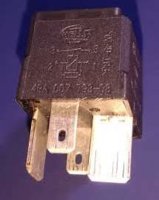Ah Ok that’s a good idea.Best way round that is to fit a low wattage solar panel on the dash. It will maintain the battery without reaching the switching threshold of the DC-DC charger.
May I just ask, as this may be of interest to other camper-van owners of a certain age who don’t use the vehicle during the winter months, is it not a good idea, whilst the vehicle is laid up, to occasionally charge the batteries via a charger on the engine battery which in turn at the same time via the BtoB will charge the leisure battery as well?
I must confess we have also done this whilst out camping on hook up when we have depleted the engine battery by having the cab radio on.
Wish I had stuck to my old T5 now, I understood how that worked.





